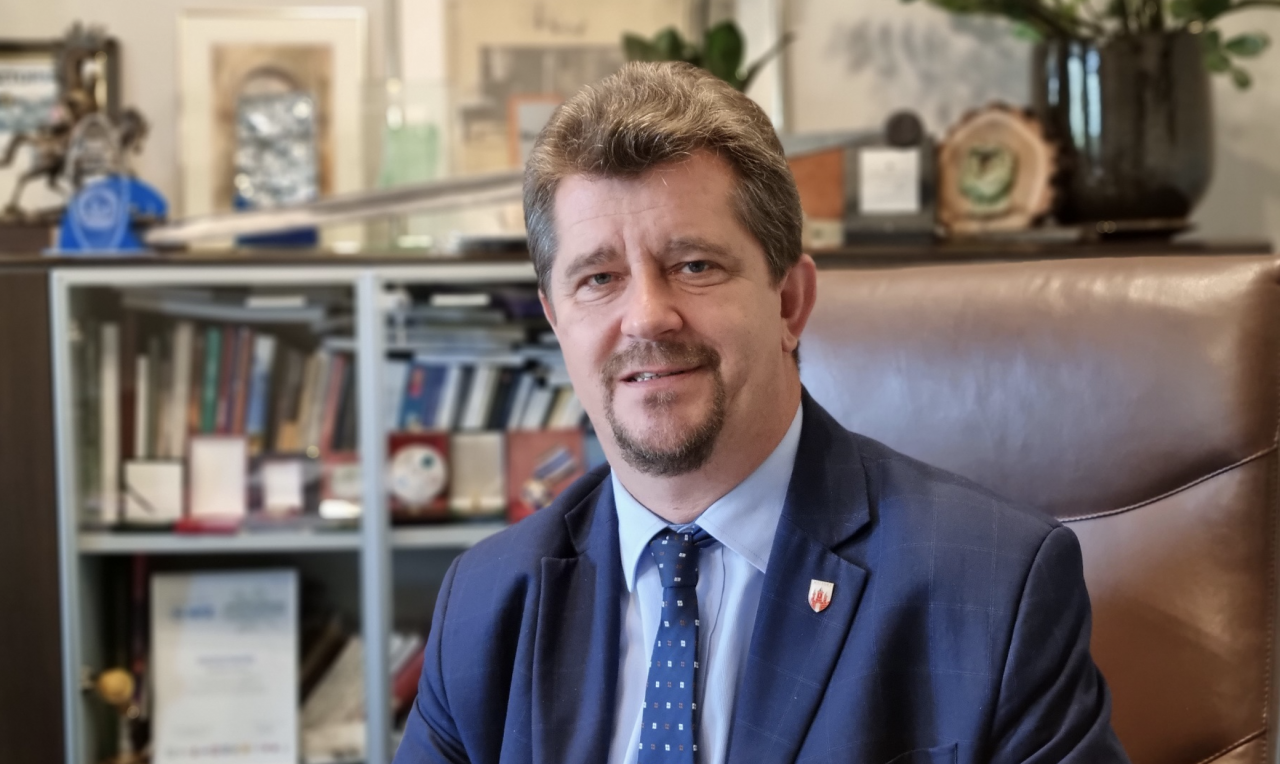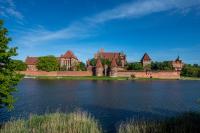
Heritage-led urban regeneration involves major urban projects, requiring significant investment and stakeholder mobilisation. In this endeavour, political backing and direction are key. The KAIRÓS interview series, conducted by the network lead expert Miguel Rivas, targets Mayors and Elected Representatives from the KAIRÓS partner cities.
Miguel Rivas: Malbork is well-known for the magnificent Teutonic Castle, which is UNESCO World Heritage Site since 1997 and one of the most visited tourist landmarks in Poland. You must be proud of it. However, this powerful spotlight on a single monument is somehow detracting from other city´s cultural heritage assets. What are you doing to be acknowledged beyond the castle city?
Marek Charzewski: Yes, you are right. The year 2022 will mark the 25th anniversary of the Teutonic Castle in Malbork inscribed on the prestigious UNESCO World Heritage List. We are proud that our city has a monument of this rank. Nonetheless, in our long-term promotional activities, we try to communicate that Malbork is not only a castle. Walking around Malbork we can notice that red brick monuments dominate here. Medieval pedigree have those located in the Old Town, such as the Old Town Hall, St. John the Baptist Church, completely rebuilt on medieval walls Latin School, the remains of the rotary system with the Marian Gate and the Potter Gate, but the appearance of the newer ones from the 19th century also refer to the medieval past of the city. The pre-war buildings of the town hall, district office, post office and railway station impress with their style. We do our best to make our heritage buildings for residents and tourists alike. Examples include the restored Water Tower as a meeting place for young people and a viewing point overlooking Żuławy, the aforementioned Latin School with a rich educational offer of workshops, or the villa of the Flataure family, which currently houses the Malbork City Museum. Residents have the opportunity to donate their family memorabilia, photographs and any valuable things they wish to pass on for future generations. We organise numerous cultural events which refer to the rich history of the city and its cultural heritage, such as the Festival of Ancient Culture or the Siege of Malbork have been in the calendar of city events for many years.
Miguel Rivas: In this view, from a city perspective, what does it mean for your cultural heritage?
Marek Charzewski: Every city changes over the years and the primary goal should be to manage this change in such a way that it respects its cultural heritage. The history of Malbork dates back to medieval times and we try to expose and communicate this fact to the youngest inhabitants. During educational classes and workshops, we present what the city and its inhabitants used to look like. We try to make the history scroll through everyday life. We try to emphasise our deep roots in investment projects, such as the construction of the External Museum of Fortifications on the basis of the existing medieval walls, where information kiosks and new technologies were used to create a model of the old town. For the opening of the tourist season we are also preparing a surprise for tourists. A miniature of the castle presenting the fortress from 1938 will be put into use, as well as a historical path running through the spaces of the city revitalisation area.

Miguel Rivas: Within the KAIRÓS framework, your team in collaboration with a group of stakeholders are working on an Integrated Action Plan for Malbork. Could you bring forward some specific actions out of this plan that are worth highlighting?
Marek Charzewski: The URBACT Group has developed many interesting proposals and initiatives. Some of them seemed almost impossible at the beginning, but after deeper analysis and discussions, it became clear that barriers can be overcome and almost any project can be brought to the stage of feasibility, both in terms of content and finance. Many valuable initiatives emerged that highlighted the values of the city, its identity and aesthetics, such as the creation of green squares by the residents, the Nogat Festival - the organisation of an event promoting the culture of water and sailing in its broadest sense, the Open Culture Zone combined with lessons of living history or the proposal to develop Malbork fairy tales and legends created and read by senior citizens. Another interesting challenge is the development of packages promoting Malbork's heritage in the form of comprehensive integrated information made available to tourists at the beginning of their stay in the city, containing invitations to visit the city's various attractions. There was also a proposal to continue and develop the project related to placing in the city space figures of Marianek, a friendly knight associated with Malbork.
Miguel Rivas: KAIRÓS is your first participation in the URBACT Programme. How would you and your team assess this experience? Have expectations been met?
Marek Charzewski: Yes, the KAIRÓS project has been our first experience in URBACT. But I wanted to say that without Malbork's participation in the Polish Ministry of Development's Partners Cities Initiative (Revitalisation Network) and the support offered by the URBACT National Contact Point, we would probably never have dared to take part in such an advanced project. I think KAIRÓS means the propitious moment, and for us it was indeed the perfect time. A time of creative meetings, brainstorming, consultations with citizens and setting new development goals for the city. Furthermore, another invaluable added value for the city is certainly the learning experience that the international cooperation and knowledge exchange with all KAIROS partners has provided.
Miguel Rivas: In May 2022, Malbork will host a last KAIRÓS international event. Thanks so much in advance. We all look forward to attend. What would you like to showcase the attendees?
Marek Charzewski: That's right, we welcomed the news about the organisation of a last study visit within the project in Malbork. We are very keen to show you the city and its functional and spatial connections. It is very important from the overall objective of our Integrated Action Plan, which is the idea of "sewing the city together". Of course, we will invite you to the castle, as it is a very important landmark, but we will also want to draw the interest of the participants in other "flavours" of Malbork. Besides the discussions about our Integrated Action Plan, we want the trip to Malbork will provide you with exceptional and unforgettable memories, and the extraordinary heritage of this place will occupy a special place in your hearts.

